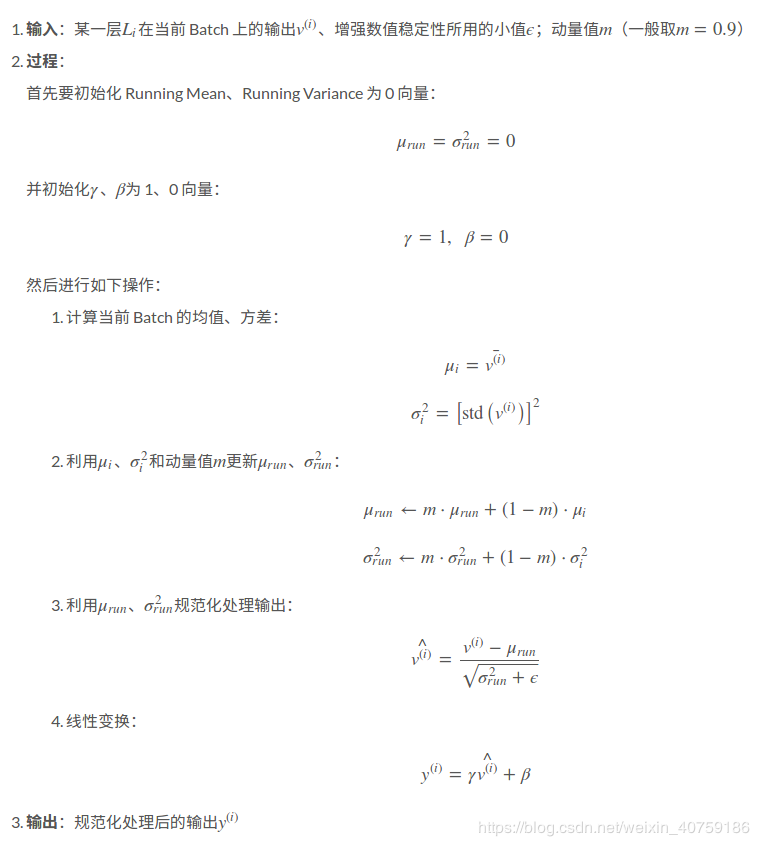原文地址:
https://blog.csdn.net/weixin_40759186/article/details/87547795
---------------------------------------------------------------------------------------------------------------
用pytorch做dropout和BN时需要注意的地方
pytorch做dropout:
就是train的时候使用dropout,训练的时候不使用dropout,
pytorch里面是通过net.eval()固定整个网络参数,包括不会更新一些前向的参数,没有dropout,BN参数固定,理论上对所有的validation set都要使用net.eval()
net.train()表示会纳入梯度的计算。
net_dropped = torch.nn.Sequential( torch.nn.Linear(1, N_HIDDEN), torch.nn.Dropout(0.5), # drop 50% of the neuron torch.nn.ReLU(), torch.nn.Linear(N_HIDDEN, N_HIDDEN), torch.nn.Dropout(0.5), # drop 50% of the neuron torch.nn.ReLU(), torch.nn.Linear(N_HIDDEN, 1), )
for t in range(500): pred_drop = net_dropped(x) loss_drop = loss_func(pred_drop, y) optimizer_drop.zero_grad() loss_drop.backward() optimizer_drop.step() if t % 10 == 0: # change to eval mode in order to fix drop out effect net_dropped.eval() # parameters for dropout differ from train mode test_pred_drop = net_dropped(test_x) # change back to train mode net_dropped.train()
pytorch做Batch Normalization:
net.eval()固定整个网络参数,固定BN的参数,moving_mean 和moving_var,不懂这个看下图:
if self.do_bn: bn = nn.BatchNorm1d(10, momentum=0.5) setattr(self, 'bn%i' % i, bn) # IMPORTANT set layer to the Module self.bns.append(bn) for epoch in range(EPOCH): print('Epoch: ', epoch) for net, l in zip(nets, losses): net.eval() # set eval mode to fix moving_mean and moving_var pred, layer_input, pre_act = net(test_x) net.train() # free moving_mean and moving_var plot_histogram(*layer_inputs, *pre_acts)
moving_mean 和 moving_var

用tensorflow做dropout和BN时需要注意的地方
dropout和BN都有一个training的参数表明到底是train还是test, 表明test那dropout就是不dropout,BN就是固定住了BN的参数;
tf_is_training = tf.placeholder(tf.bool, None) # to control dropout when training and testing # dropout net d1 = tf.layers.dense(tf_x, N_HIDDEN, tf.nn.relu) d1 = tf.layers.dropout(d1, rate=0.5, training=tf_is_training) # drop out 50% of inputs
d2 = tf.layers.dense(d1, N_HIDDEN, tf.nn.relu) d2 = tf.layers.dropout(d2, rate=0.5, training=tf_is_training) # drop out 50% of inputs
d_out = tf.layers.dense(d2, 1)
for t in range(500): sess.run([o_train, d_train], {tf_x: x, tf_y: y, tf_is_training: True}) # train, set is_training=True if t % 10 == 0: # plotting plt.cla() o_loss_, d_loss_, o_out_, d_out_ = sess.run( [o_loss, d_loss, o_out, d_out], {tf_x: test_x, tf_y: test_y, tf_is_training: False} # test, set is_training=False )
def add_layer(self, x, out_size, ac=None):
x = tf.layers.dense(x, out_size, kernel_initializer=self.w_init, bias_initializer=B_INIT)
self.pre_activation.append(x)
# the momentum plays important rule. the default 0.99 is too high in this case!
if self.is_bn: x = tf.layers.batch_normalization(x, momentum=0.4, training=tf_is_train) # when have BN
out = x if ac is None else ac(x)
return out
当BN的training的参数为train时,只是表示BN的参数是可变化的,并不是代表BN会自己更新moving_mean 和moving_var,因为这个操作是前向更新的op,在做train之前必须确保moving_mean 和moving_var更新了,更新moving_mean 和moving_var的操作在tf.GraphKeys.UPDATE_OPS
# !! IMPORTANT !! the moving_mean and moving_variance need to be updated, # pass the update_ops with control_dependencies to the train_op update_ops = tf.get_collection(tf.GraphKeys.UPDATE_OPS) with tf.control_dependencies(update_ops): self.train = tf.train.AdamOptimizer(LR).minimize(self.loss)